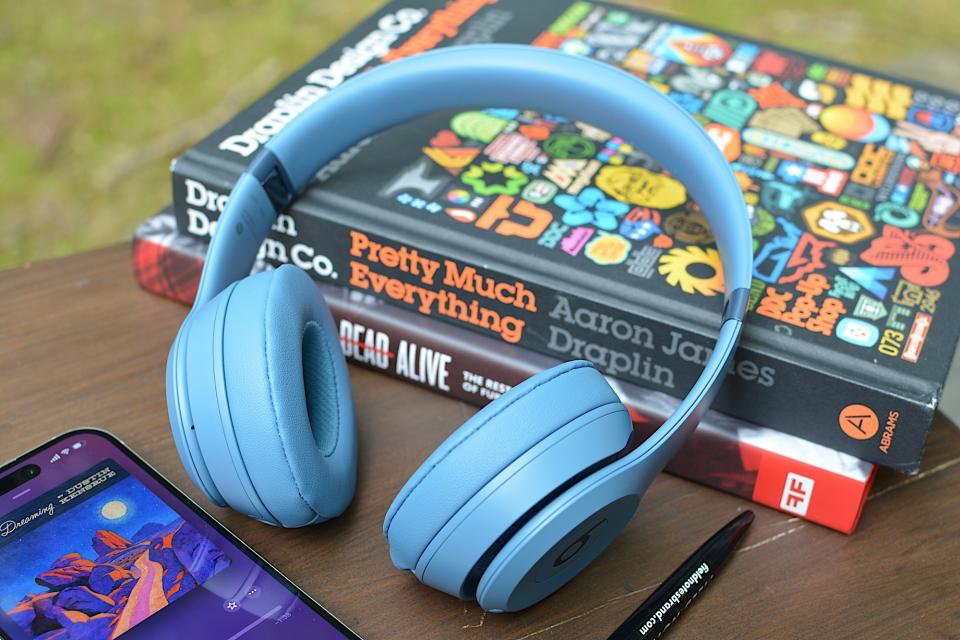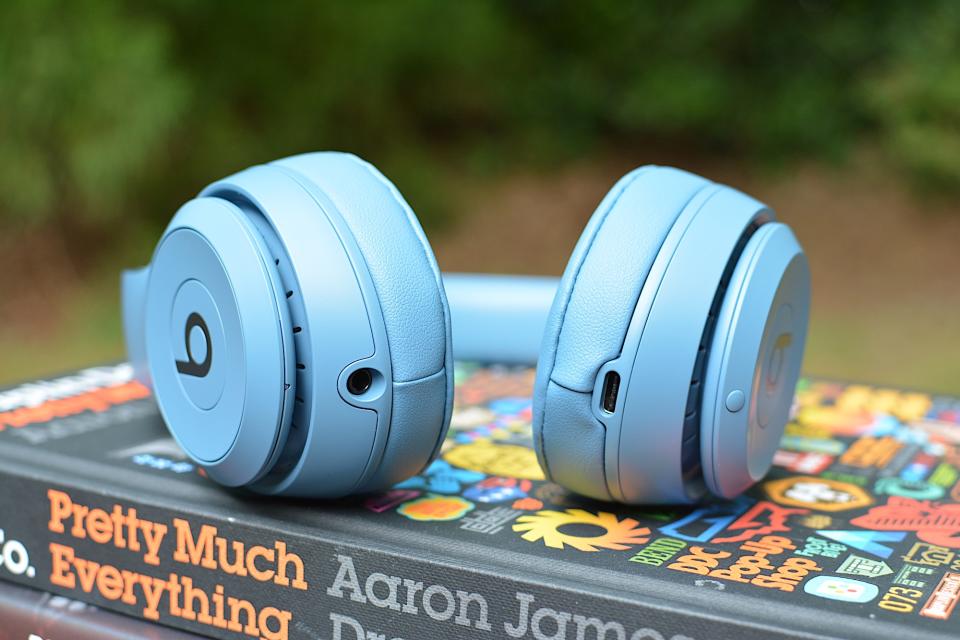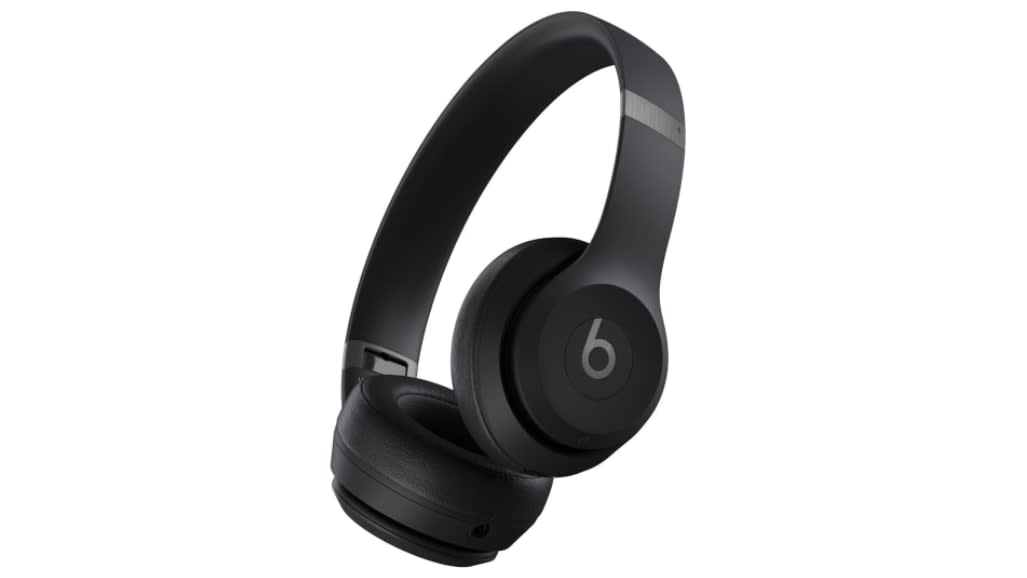When Beats introduced the Solo 3 in 2016, the headline feature was the inclusion of Apple’s W1 audio chip. This delivered seamless pairing with Apple devices, which made life much easier for iPhone, Mac and iPad owners. Besides the noise-canceling Solo Pro in 2019, Beats hadn’t updated the Solo line in nearly eight years, and it’s now bringing its popular on-ear headphones up to today’s standards. Beats announced the Solo 4 today, a $200 set of familiar-looking cans with significant updates to audio quality and battery life. But as it has done on other devices, the company has chosen its own audio platform over Apple’s AirPod chip.
Beats made significant updates to audio quality and battery life on the Solo 4, but the design is in need of a refresh.
- 50-hour battery life
- Improved sound quality
- USB-C
- No price increase
- Overly familiar design
- Not the most comfortable for big heads
- No multipoint Bluetooth on iOS
- No automatic pausing
What’s new on the Beats Solo 4?
Beats says it re-engineered the audio on the Solo 4 for “incredible, high-fidelity acoustics.” This includes new, custom-built 40mm transducers that it says offer “extraordinary clarity and range” due to minimal latency and distortion. The company explained that the change also led to improved high-frequency response compared to the Solo 3. Beats says the Solo 4 is its only passively-tuned headphone, so you’ll get the same audio quality when listening wirelessly as you do when your battery dies and you have to employ the 3.5mm jack.
Spatial Audio was available on the Solo 3, but Beats took things a step further on the Solo 4 by adding Personalized Spatial Audio with dynamic head tracking. This is the process Apple developed for its AirPods that uses your iPhone’s camera to create a custom audio profile tailored to the shape of your ears. The effectiveness of head tracking in enhancing Spatial Audio might depend on your personal preferences and the content, but the addition brings the Solo 4 up to date with other Beats (and Apple) audio products.


Another big upgrade is battery life. The Solo 3 already offered 40 hours of play time on a charge, but Beats managed to squeeze another 10 hours out of the Solo 4. Of course, that’s with a volume level of about 50 percent with Spatial Audio off (45 hours with it on). The quick-charge feature, Fast Fuel, now gives you up to five hours of use in 10 minutes. That’s two hours more than the Solo 3.
Like Apple has done with most of its products, Beats made the switch to USB-C for charging on the Solo 4. That wired connection also delivers lossless audio, so long as you’re listening to compatible content with a supported device. Similar to other recent Beats products, the Solo 4 swaps Apple’s chips for the company’s own platform. In this case, the W1 on the Solo 3 has been replaced, but there’s still deep integration with iOS, macOS and iPadOS. And the company’s recent efforts to better cater to Android users continues on the Solo 4.
Beats upgraded the microphones on the Solo 4, though they’re used solely for calls since there’s no active noise cancellation (ANC) here. Specifically, the company says it swapped out analog mics for digital, beam-forming MEMS ones, leading to increased quality when it comes to voice capture across various environments. Beats also added a noise-learning algorithm that can target your voice while combating background roar and wind.
What’s good


The steps Beats took to improve the sound quality on the Solo 4 truly delivered. The company has employed a more even-handed tuning for several years now, ditching the overly bass-heavy EQ that dominated the sound on its early headphones. I can also hear the added clarity in tracks like Justice’s “Neverender,” where details like synth sounds had brought an atmospheric texture that enhanced the song. This is most prominent when you have Spatial Audio activated, and in my experience, the Solo 4 were at their best with Dolby Atmos content in Apple Music.
The 50-hour battery life claim holds out, too. After 37 hours of testing at around 50-percent volume, macOS was still showing the Solo 4 had 35 percent left in the tank. That’s pacing ahead of Beats’ stated figure. During my test, I was streaming spatial Dolby Atmos content from Apple Music, mostly from a MacBook Pro.
Beats says the Solo 4 has the same memory foam ear pads as the over-ear Studio Pro headphones, but with a new cover material for that component to further boost comfort. I do feel like there’s less of a vice-like pressure when I’m wearing the Solo 4, but after a couple of hours, each passing minute felt more laborious.
What’s bad


While we’re on the topic of comfort, I’ve never been a fan of the on-ear style of headphones. Most of them, the Beats Solo included, feel like they’re clamping down on my head. GrantedI have a large dome; I take my New Era caps in 7 ⅝. But I can appreciate that this design is very popular, so this is less of a con and more of an observation for my fellow large-domed homies. The slight changes to the ear pads definitely help make it more comfortable, but it’s still too snug a fit for me.Clearly, though, the Solo line is a hit: Beats says it has sold over 40 million pairs of these on-ear cans.
I also wish the company did a bit more with the Solo 4’s design. I understand “if it ain’t broke” and all that, but this feels like a missed opportunity. Beats opted to keep almost entirely the same look from the Solo 3, except that the “Solo” branding on the headband is now just a “4.” The company changed things up a bit on the Solo Pro, but that model isn’t around anymore, so a design update on the non-ANC Solo headphones would’ve been a welcome change.
While there are some obvious updates to the audio profile, the Solo 4 sounds a bit thin at times. When listening on an iPhone, audio performance is consistent across genress, but there’s a noticeable difference when listening to the same songs on Apple Music on a Mac. That Justice album, Hyperdrama, doesn’t have the same oomph streaming from my MacBook Pro as it does from my iPhone.
The Solo 4 is also missing multipoint Bluetooth support on iOS. It isn’t the first Beats audio device that lacks this, but that doesn’t make it any less frustrating. The ability to automatically switch between your computer and your phone when you get a call is a handy feature most headphones offer these days. And if you’re used to having it, it’s something you’ll miss on the Solo 4.
Wrap-up
There’s no denying the updates Beats made on the Solo 4 in terms of sound quality and battery life. The company also made tweaks to modernize it, including the switch to USB-C. Small changes to the ear pads make the Solo 4 more comfortable for those of us with big heads, but the fit is still far from ideal. And overall, the familiar design could use a refresh, especially now that we’re nearly eight years on from the Solo 3. Still, the Solo 4 is a clear upgrade from the Solo 3, but it’s likely not significant enough to entice more than the Beats faithful.
The Beats Solo 4 is available today for $200 from Apple. The headphones come in black, blue (pictured) and pink color options.


